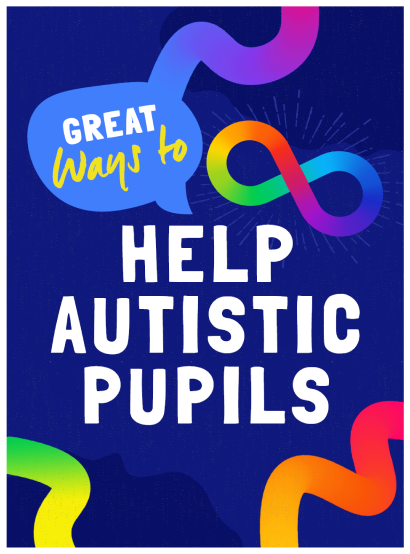An effective strategy for avoiding having to restrain pupils with autism and SEND

How to develop a reasonable, hands-on approach for children with SEN and behavioural difficulties…
- by Steve Brown

Some children with ASD go to extreme measures to get human contact, even if that means being restrained. We may need a reasonable hands-on approach, says Steve Brown…
I have supported children who have approached me and other staff members informing us that they need to be held or they will hurt someone.
This may appear strange to people who have never worked alongside children with SEN and behavioural difficulties But if staff do not give certain children with ASD reassurance through physical touch, these children will continue to need restraining because the restraint will be the only time they get to experience the comfort of being held by consistent and reasonable adults.
No adult wants to restrain a child unless it is absolutely necessary. If staff were to use physical contact as part of a planned and coordinated approach with certain children (obviously not children with ASD who are hypersensitive to touch), it would help to reduce the number of restraints that can be more traumatic for both child and adult.
It would reduce the risks involved in administering holds, prevent emotional stress and reduce the likelihood of injuries. More importantly, staff can promote positive interactions that will create a safer working environment.
Change the ethos
My autistic nephew, who is 13 years old, needs physical touch and always craves hugs. He sits close to people and leans on them. He feels safer and conveys his feelings about the person through his contact. He gets feedback from physical touch, and it helps him relate to other people.
This is not too dissimilar to how children and adults without autism receive their feedback. If a person has not seen a family member or friend for a very long time, the hugs seem to be deeper and longer, which can be difficult for some people who are averse to touchy-feely interactions.
Here, however, we are considering children who may be vulnerable and in need of reassurance; this is a professional approach that acts as a strategy.
For those who are immediately thinking about child protection issues and increased allegations, let us think again! If there is a genuine need for physical contact, let’s write it on the child’s risk reduction or restraint reduction plan.
Share it with everyone – parents and carers, staff and outside agencies. Write it into the setting policies. Make this the normal ethos of the setting.
Taking the initiative
This is not something to do as an alternative approach. It is a strategy to keep children safe and reduce anxieties that can affect a child’s learning and development.
At the moment I am giving outside support and advice to several children. I am encouraging staff to use the same physical intervention prompt and guide when the child is doing well and is engaging positively, as when they are needing the prompt or guide to keep them from trouble and keep them safe.
I feel that staff need to use physical touch as a matter-of-fact strategy when the child is going through a range of emotions so that it becomes consistent, normal practice that reassures and supports emotional development.
Some of these children – especially those with severe learning disabilities and others with limited communication – will experience negative interactions, so physical contact will be a positive connection with other people.
I have worked with children who have actively sought an adult to hold or restrain them. As adults, we are often trying to steer away from holding, so it can feel strange when children want to be held.
My experience is that some children feel comfortable, safe and secure through close physical contact. Very often the adults will receive verbal abuse, such as, “Hold me or I’ll hurt someone”.
I have also heard accounts where children have deliberately engaged in unsafe behaviour which they know will lead to being held.
When physical contact such as guiding, firm squeezing across the shoulders with both hands, a friendly tap on the arm, arms across the shoulders and firm handshakes is made throughout the day, it can help to avoid children ending up in restraints.
The child is receiving the physical interaction he or she is seeking in an assertive and non-threatening manner.
Children with ASD or those who are hypersensitive to touch can seek the feedback they crave or need to experience. This is about adults taking initiative and pre-empting what the child may need.
Steve Brown is a senior Team Teach tutor and has been the Care and Control Coordinator for Birmingham City Council. He is also the author of Autism Spectrum Disorder & De-escalation Strategies from which this extract is taken. Browse more resources for Autism Acceptance Week.











